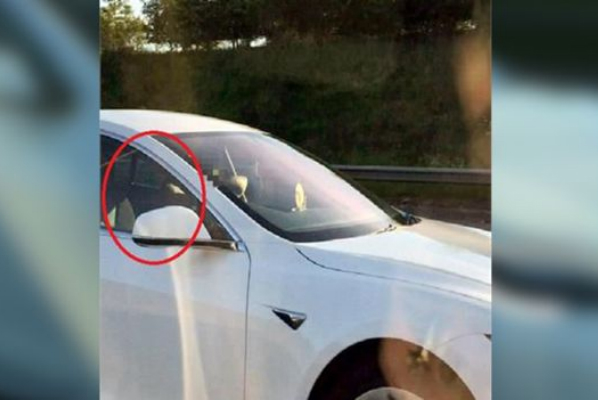
What will Elon Musk say? A U.K. driver was banned from all driving for 18 months after pulling a crazy stunt with his Tesla’s autopilot that has to be seen to be believed.
Someone in another car on the M1 highway grabbed a video of Bhavesh Patel sitting in the passenger seat of his Tesla Model S 60 — with no one in the drivers’ seat. The Nottingham, England prankster complained he was “the unlucky one who got caught,” BBC News reported.
Telsa cars equipped with autopilot give warnings each time the partial self-driving mode is engaged. Drivers are warned that autopilot is not fully autonomous and that they must keep their hands on the wheel, eyes on the road, and remain attentive and ready to take over if needed.
Patel reportedly told police at the Stevenage Police Station that even though what he did was “silly,” his Tesla was capable of something “amazing,” according to the BBC.
“What Patel did was grossly irresponsible and could have easily ended in tragedy,” PC Kirk Caldicutt from Hertfordshire Police told the BBC.
“He not only endangered his own life but the lives of other innocent people using the motorway on that day.”
Tesla provided a statement to the court. A Tesla engineer testified that the electric vehicle’s autopilot provides driving assistance, but requires that a “fully-attentive driver.”
A passenger in another car saw the Tesla traveling at 40 miles per hour with Patel sitting in the passenger seat and captured it on film. After the video was posted on social media, the video and Patel’s stunt were reported to the police.
The incident occurred in May 2017, but the court case was heard only recently. Patel pleaded guilty to dangerous driving at Saint Albans Crown Court on April 20. In addition to being banned from driving for 18 months, Patel was ordered to pay court costs of $2,480 and was sentenced to 100 hours of community service.
After a California fatality in March involving a Tesla Model X, the deceased driver’s wife later said her husband previously mentioned that car was confused by a damaged crash barrier. Tesla said the driver did not respond to autopilot warnings.
Self-driving technology promises to save many lives when it’s sufficiently developed, but no one claims autonomous vehicles are ready today. Driver antics such as Patel’s don’t advance driverless autonomy directly, but they do underscore the fact that human misjudgment and error cause the vast majority of fatal accidents.
Editors' Recommendations
- Tesla Battery Day: Model S Plaid, Autopilot updates, and all the big news
- Cadillac Super Cruise vs. Tesla Autopilot
- Andrew Yang broke Tesla’s one big Autopilot rule in campaign commercial
- Mod turns Tesla Model S into surveillance bot that tracks faces, license plates
- Don’t trust Tesla’s new autonomous lane-changing feature, Consumer Reports warns




